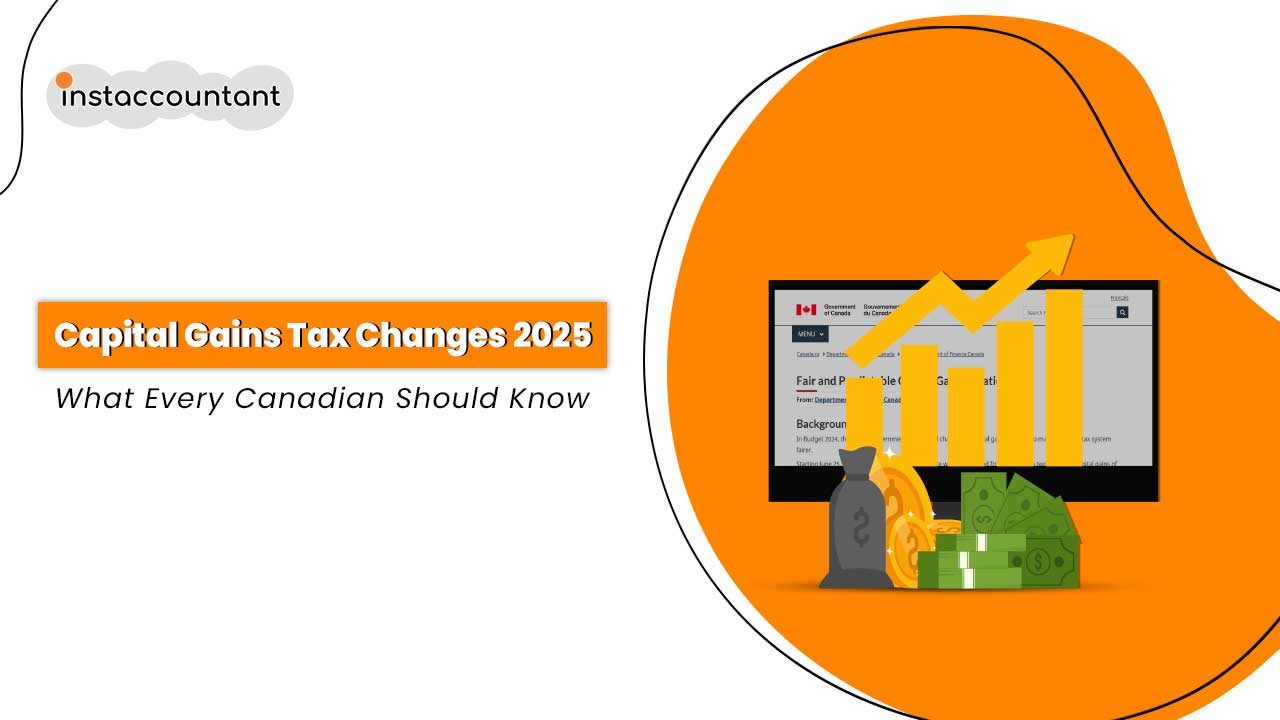Taxes can be tricky, and things are about to get even more complicated for Canadians. If you’ve been following the news, you’ve probably heard about the capital gains tax changes before. The federal government is also making changes to the tax system that will affect individuals, corporations, and trusts. Whether you’re a investor, a business owner, or someone planning for the future, it’s important to understand these changes. We’ve gathered all the information you need about the 2025 capital gains tax rules and how they’ll affect your financial goals, so you can stay on top of these changes with confidence.
What are Capital Gains, Anyway?
Before we delve into these changes, let’s take a quick look at capital gains. Simply put, a capital gain is the profit you make when you sell an asset for a higher price than you purchased it for. These assets can include stocks, bonds, real estate (excluding your principal residence), and other investments.
In Canada, a portion of capital gains is taxable, known as the “inclusion rate.” This percentage determines how much of your capital gain is added to your taxable income for the year.
The Current Situation (Up to June 24, 2024)
Canada currently has a capital gains tax rate of 50%. This means that only half (50%) of the income you receive from the sale of your capital assets will be included in your taxable income. For example, if you sell your stock and make a $10,000 profit, only $5,000 of that will be subject to capital gains tax.
The Proposed Changes (Effective June 25, 2024, but Pending Legislation)
The federal government has proposed increasing the rate of inclusion of capital gains. Here’s a significant change:
- Higher Inclusion Rate: For individuals, capital gains above $250,000 yearly would be subject to an inclusion rate rising from 50% to 67%, or two-thirds.
- Threshold for Individuals: The $250,000 threshold is critical because the first $250,000 of capital gains an individual realizes in any given year will continue to be taxed at the current 50% inclusion rate. Only the amount above $250,000 would be subject to the higher rate of 67%.
- Corporations and Trusts: The 67% inclusion rate would be imposed on all capital gains realized by corporations and most trusts without any threshold.
- Principal Residence Exemption Remains: The good news is that the capital gains exemption on the sale of your principal residence remains unchanged. You will continue not to pay capital gains tax on the profit from the sale of your primary home.
Example: How the New Capital Gains Tax Affects You
If you sell stocks in 2025 and realize a $300,000 capital gain:
- The first $250,000 is taxed at the 50% inclusion rate (adding $125,000 to taxable income).
- The remaining $50,000 is taxed at the 67% inclusion rate (adding $33,500 to taxable income).
Here’s the breakdown:
| Scenario | Old Rule (50% Inclusion Rate) | New Rule (50% for $250K, 67% Above) |
|---|---|---|
| First $250,000 of Gain | $125,000 taxable | $125,000 taxable |
| Remaining $50,000 of Gain | $25,000 taxable | $33,500 taxable |
| Total Taxable Income | $150,000 | $158,500 |
| Marginal Tax Rate (40%) | $60,000 tax payable | $63,400 tax payable |
| Difference | — | +$3,400 |
The new inclusion rate can significantly increase tax liability for taxpayers with high capital gains. Strategic planning, such as timing asset sales or leveraging tax-saving strategies, will be essential to minimize the impact.
Why the Change?
The government’s rationale for this change is to increase tax revenue and promote greater fairness in the tax system.
Important Caveat: Pending Legislation
It is understood that these changes are based on a Ways and Means motion and are not yet law. They require formal approval by Parliament. The CRA has indicated that it will enforce the new rules based on the Ways and Means motion introduced in 2024. However, if Parliament does not pass formal legislation when it resumes in March 2025 or if a government change occurs during a potential spring election, the changes could be reversed.
Taxpayer Discretion:
Taxpayers are not legally obligated to file under the new rules until they are enacted. However, filing based on the proposed regulations and requesting a refund later may provide flexibility if the changes are reversed.
What These Capital Gains Changes Means for You
- Higher Tax Liability for Large Gains: If you generally have more than $250,000 in long-term capital gains annually, you can expect to face higher taxes if the proposed changes are passed into law.
- Possible Effect on Investment Decisions: These changes could impact your investment decisions, especially if you’re considering selling assets with substantial gains.
- Importance of Tax Planning: Now, more than ever, proactive tax planning is a must. You should consult a qualified tax professional to get a clear understanding of how this change will affect your particular situation and to develop strategies that can help you mitigate the negatives.
Strategies for Managing 2025 Capital Gains Changes
- Leverage the $250,000 Threshold: If you expect to accumulate more than $250,000, consider growing your portfolio over many years. By doing so, you can stay in the starting position and take advantage of lower coverages, thereby reducing the impact of higher taxes.
- Tax-Loss Harvesting: This includes selling underperforming investments to take a loss that can offset tax benefits you receive elsewhere. By managing your losses effectively, you can reduce your overall liability and potentially lower your annual tax bill.
- Use Registered Accounts: Pensions and Registered Retirement Savings Plans (RRSPs) are a smart way to avoid paying taxes on your income and capital gains. Contributions to an RRSP are tax-deferred, meaning you don’t pay taxes on the funds until you withdraw them in retirement, while a TFSA allows your funds to grow tax-free. Both are vital to minimizing tax impacts under the new capital gains rules.
Key Considerations for Business Owners and Trusts
The new capital gains inclusion rate makes financial planning much more complex for trusts and businesses. The following are some strategies the corporate taxpayer should put in place to work around the changes:
- Timing of Asset Disposals: Careful timing of asset disposals may help alleviate the effect of the higher inclusion rate, allowing businesses to plan and spread the tax liability over more than one year by carefully timing when they sell their assets and, in some cases, enjoying the benefit of lower rates.
- Review Estate Plans: The new capital gains rules may also impact trusts in a quite dramatic way. Therefore, it is important to review and update the estate plans with a view to optimizing the distribution of trusts under the new tax regime. It may need rethinking how assets are transferred or distributed to beneficiaries with a view to reducing tax exposure.
In Conclusion
The Canadian tax landscape will change dramatically with the expected changes in capital gains tax. Although an effective date has not been announced, it is a good time to begin planning for the future. And a good tax professional can be your trusted advisor, helping you understand the complexities and make informed decisions.




